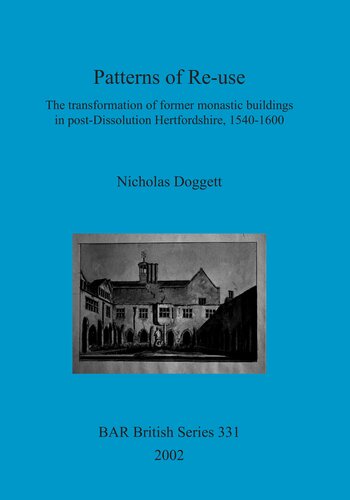

Most ebook files are in PDF format, so you can easily read them using various software such as Foxit Reader or directly on the Google Chrome browser.
Some ebook files are released by publishers in other formats such as .awz, .mobi, .epub, .fb2, etc. You may need to install specific software to read these formats on mobile/PC, such as Calibre.
Please read the tutorial at this link: https://ebookbell.com/faq
We offer FREE conversion to the popular formats you request; however, this may take some time. Therefore, right after payment, please email us, and we will try to provide the service as quickly as possible.
For some exceptional file formats or broken links (if any), please refrain from opening any disputes. Instead, email us first, and we will try to assist within a maximum of 6 hours.
EbookBell Team

5.0
68 reviewsThe adaptive re-use of English monastic buildings in the second half of the 16th century has been relatively little studied. With a few notable exceptions, it has been generally assumed that most former monastic sites were simply plundered for their building materials. Two new approaches suggest that frequently this was not so. First, by examining in detail all the monastic houses of a single county - in this case Hertfordshire - which survived until the Dissolution, and, secondly, by treating the surviving architectural evidence as a primary source, it can be shown that much medieval fabric is, in fact, incorporated in later houses on monastic sites, even when this is not readily apparent. Coupled with contemporary documentary records and later antiquarian accounts, this structural analysis allows a reconstruction to be made of the processes of re-use in the half-century after the Dissolution. The author features 13 detailed case studies of important properties.